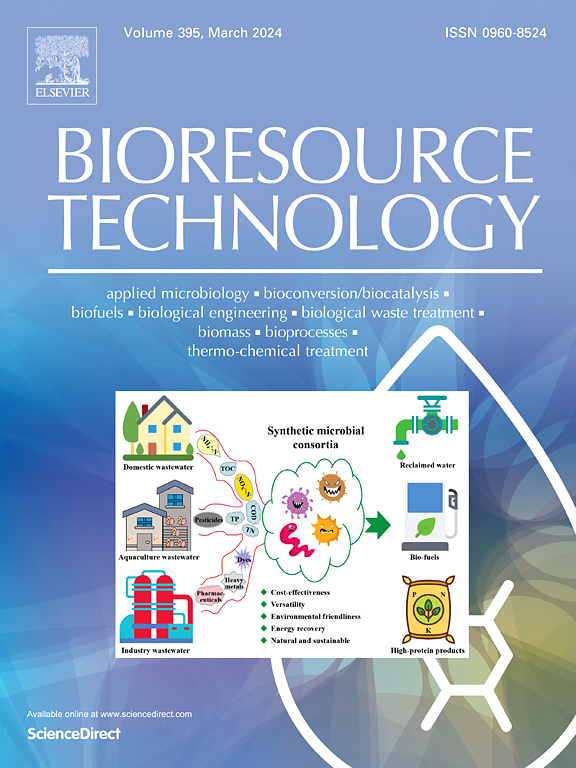Effects of Fe/Mg-modified lignocellulosic biochar on in vitro ruminal microorganism fermentation of corn stover
IF 9.7
1区 环境科学与生态学
Q1 AGRICULTURAL ENGINEERING
引用次数: 0
Abstract
This study investigated the effectiveness and synergistic mechanism of trace-element-modified biochar (BC) on in vitro ruminal fermentation of lignocellulose. Fe/Mg-modified BC containing Fe@BC, Mg@BC and Fe/Mg@BC were prepared, and their effects on in vitro ruminal fermentation of corn stover were assessed. Results indicate that Mg@BC achieved the highest reducing-sugar content (320.4 mg/L) with an additive dose of 12 g/L and a substrate load of 4 %, owing to the presence of enriched lignocellulolytic microorganisms like Treponema and Bacillus. Moreover, Mg@BC promoted the growth of acid-producing bacteria, including Bacteroides and Lachnospiraceae, resulting in the highest production of volatile fatty acid (3.2 g/L). Fe@BC increased the amount of hydrogenogens including Prevotellaceae_YAB2003 and Lachnospiraceae_NK3A20, contributing to the highest hydrogen production. Meanwhile, Fe/Mg@BC facilitated the growth of Succiniclasticum and Lactobacillus, which effectively produce succinic and lactic acids. These findings provide new insights into efficient lignocellulose bioconversion via in vitro ruminal fermentation with Fe/Mg-modified BC supplementation.

求助全文
约1分钟内获得全文
求助全文
来源期刊

Bioresource Technology
工程技术-能源与燃料
CiteScore
20.80
自引率
19.30%
发文量
2013
审稿时长
12 days
期刊介绍:
Bioresource Technology publishes original articles, review articles, case studies, and short communications covering the fundamentals, applications, and management of bioresource technology. The journal seeks to advance and disseminate knowledge across various areas related to biomass, biological waste treatment, bioenergy, biotransformations, bioresource systems analysis, and associated conversion or production technologies.
Topics include:
• Biofuels: liquid and gaseous biofuels production, modeling and economics
• Bioprocesses and bioproducts: biocatalysis and fermentations
• Biomass and feedstocks utilization: bioconversion of agro-industrial residues
• Environmental protection: biological waste treatment
• Thermochemical conversion of biomass: combustion, pyrolysis, gasification, catalysis.
 求助内容:
求助内容: 应助结果提醒方式:
应助结果提醒方式:


